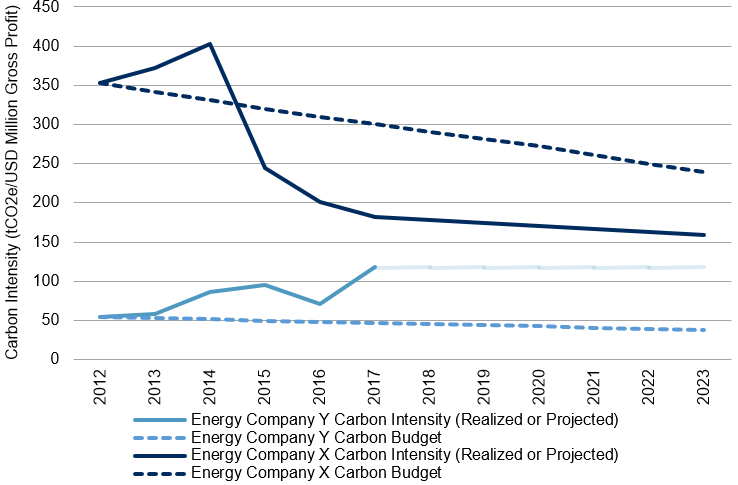This is the third blog in a series on index innovation for net zero. The first blog, Journey to Net Zero with the S&P PACT™ Indices, discusses how a combination of groundbreaking new datasets and index innovation is emerging. The second blog, “Let’s Get Physical” With S&P Trucost’s Physical Climate Risk Data, looks at how technological advances are paving the way for granular assessments of physical risk exposure. We now turn to new datasets and index innovations that are catalyzing an investor-led revolution to reorient capital flows towards a net zero emissions trajectory by 2050.
We hold these truths to be self-evident: that the climate is rapidly warming due to human activity;1 that if we don’t act soon, we’ll face certain dire consequences; and, that among these are loss of life, loss of habitat and widespread destruction. However, we still have a limited window of time to course correct and transition to a low-carbon economy. Indeed, efforts to limit global temperature rise to well below 2°C (preferably 1.5°C) of warming since pre-industrial levels are well underway, thanks to the Paris Agreement and ratified commitments from at least 190 parties. In addition, groundbreaking new datasets and index innovations are catalyzing an investor-led revolution: to reorient capital flows towards a net zero emissions trajectory by 2050.
Among these, are the S&P Paris-Aligned & Climate Transition (PACT) Indices. Compliant with the EU Low Carbon Benchmark Regulation on requirements for having a Paris-Aligned Benchmark (PAB),2 these indices equip investors with the tools they need to transition their portfolios towards net zero. They equip investors to align with the Paris Agreement and achieve other key climate objectives, while remaining as close as possible to the underlying benchmark targeting broad and diversified exposure. As with any investment strategy, of course, the results are only as good as the quality of the inputs. What sets these indices apart – besides the sophistication of the methodology – is the formidable depth, breadth and robustness of the underlying S&P Global Trucost data.
Exhibit 1: Illustrative Company Greenhouse Gas (GHG) Emission Trajectories Relative to Carbon Budgets

Source: S&P Global Trucost. For illustrative purposes only.
Built upon decades of portfolio carbon assessments and climate modeling experience, Trucost’s Paris Alignment Dataset is a key driver of the S&P PACT Indices methodology. Using transition pathway models to assess company-level alignment with carbon budgets, the data provides an accessible net zero pathway for indexing, plus multiple investment use cases. The budgets reflect a company’s share of the decarbonization required to transition to net zero from its unique base-year emissions – measured by the difference in tCO2e (tons of carbon and carbon equivalents) between a company’s actual emission’s trajectory and its required pathway (See Exhibit 1). This is accomplished in one of two ways:
-
1. The SDA Approach
For companies with high-emitting, homogeneous business activities, climate scenario models produced by the International Energy Agency (IEA) define sector-specific budgets in terms of units of output – for instance, tCO2e per ton of crude steel produced. Essentially, companies in each sector must converge towards emission intensities consistent with a given scenario (1.5°C or 2°C) by 2050 from their unique starting points.3 This method, known as the Sectoral Decarbonization Approach (SDA), permits sectors to decarbonize at varying speeds, depending on the available technologies and opportunities for carbon efficiencies within each sector.
2. The GEVA Approach
For companies with low-emitting or heterogeneous business activities, without distinct pathways defined in climate scenarios, budgets are based on GHG Emissions per unit of Value-Added (GEVA), via a non-industry specific, economy-wide scenario. This captures the reductions a company must make to be consistent with required rates for the overall economy, given its unique starting emissions intensity, in terms of a financial rather than physical denominator. For example, if global emissions per unit of GDP fell by 5% each year, they would be 50% lower in 2050 than in 2010, assuming the economy continues to grow at its historical rate of 3.5%. We can thus translate this 5% year-on-year reduction to company budgets based on their individual contributions to GEVA.4
Together, these two approaches fuel a cutting-edge dataset that unlocks dynamic company-level insights to align portfolios with the goals of the Paris Agreement. In the S&P PACT Indices, constituents are thereby reweighted, so the entire index is 1.5°C compatible on a forward-looking basis at every rebalance. With more than $1.3bn U.S. in AUM tied to the indices to date, both the indices and the transformative Paris Alignment data that powers them already represent a considerable force in the global fight against climate change.
The final blog in the series, It’s All Within Scope, With S&P Global Scope 3 Data, looks at the importance of tracking GHG emissions from Scope 3.
1 Numerous publications in peer-reviewed scientific journals highlight that more than 97% of climate scientists believe the earth’s climate is rapidly warming due to human activity. https://iopscience.iop.org/article/10.1088/1748-9326/11/4/048002
2 “EU climate benchmarks and benchmarks’ ESG disclosures”, EU, https://ec.europa.eu/info/business-economy-euro/banking-and-finance/sustainable-finance/eu-climate-benchmarks-and-benchmarks-esg-disclosures_en.
3 Underpinning both approaches is a solid foundation of precise and granular company carbon data from Trucost, based on its proprietary environmentally extended input-output modeling of 464 sub-industries and verified company disclosure. For more information visit: [Please link to “Completing Data Gaps in Corporate Environmental Performance Disclosure’, which will be coming.
4 For more information on the Trucost Paris Alignment Dataset please go to: www.spglobal.com/spdji/en/education/article/faq-sp-paris-aligned-and-climate-transition-pact-indices.
Learn more about how "The Quality Imperative" differentiates our essential sustainability intelligence.
READ MORE >-
Discover multiple layers of ESG insight.
Learn more -
Get comprehensive company analytics and best practice reporting solutions.
Learn more -
Optimize the climate, ESG and impact performance of your investment portfolio.
Learn more
We’re here to help you accelerate your sustainability journey. Get connected with an ESG specialist who can advise you on your next steps.
Talk To An Expert


